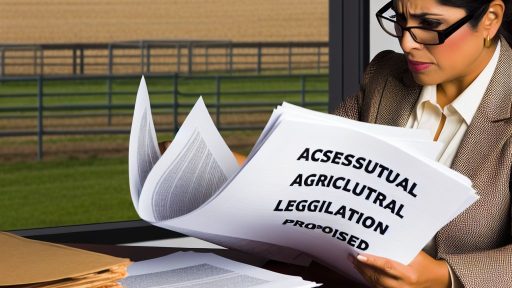Introduction to Pesticide Use Laws
Pesticide use laws play a vital role in agricultural practices.
They ensure safety for both consumers and the environment.
Understanding these laws is essential for farmers and pesticide applicators.
Moreover, they govern the application, distribution, and marketing of pesticides.
Regulatory Framework
The regulatory framework for pesticide use varies by region.
In the United States, the Environmental Protection Agency oversees federal regulations.
Additionally, each state has its own regulations and enforcement procedures.
Farmers must comply with both federal and state laws.
This dual regulation ensures higher safety standards.
Importance of Compliance
Compliance with pesticide laws protects human health and the ecosystem.
Pesticides can have harmful effects if misused.
Furthermore, violations can lead to significant legal penalties.
Farmers and applicators must stay informed about current regulations.
Types of Pesticides
Various types of pesticides are available for agricultural use.
Herbicides control unwanted plants, while insecticides target pests.
Transform Your Agribusiness
Unlock your farm's potential with expert advice tailored to your needs. Get actionable steps that drive real results.
Get StartedFungicides help manage plant diseases effectively.
Each type of pesticide follows specific guidelines for safe use.
Education and Training
Proper education is crucial for safe pesticide application.
Training programs provide essential information on pesticide handling.
Farmers should seek certifications to demonstrate their knowledge.
Ongoing education helps keep all stakeholders updated on new regulations.
Types of Pesticides: Understanding Classifications and Regulations
Overview of Pesticide Categories
Pesticides fall into several categories based on their target organisms.
Common categories include insecticides, herbicides, and fungicides.
Each category serves a specific purpose in pest management.
Understanding these categories is crucial for effective use.
Insecticides
Insecticides specifically target insect pests.
They come in various formulations, such as liquids and granules.
Some are systemic, affecting pests internally when ingested.
Others act as contact poisons, affecting pests upon contact.
Types of Insecticides
- Natural insecticides, derived from plants, are considered less harmful.
- Synthetic insecticides provide broader-spectrum control.
- Neonicotinoids are a popular class but have raised environmental concerns.
Herbicides
Herbicides target unwanted plants or weeds.
They are classified as pre-emergent or post-emergent herbicides.
Pre-emergent herbicides prevent weed growth before they sprout.
Post-emergent herbicides kill existing weeds after they appear.
Types of Herbicides
- Selective herbicides affect specific types of plants.
- Non-selective herbicides kill all plant life they contact.
- Glyphosate is a well-known non-selective herbicide.
Fungicides
Fungicides control fungal diseases affecting plants.
They are essential for protecting crop yields.
Some fungicides are preventive, while others are curative.
Choosing the right fungicide depends on the specific disease.
Types of Fungicides
- Contact fungicides remain on the plant surface.
- Systemic fungicides penetrate plant tissues.
- Biorational fungicides are derived from natural sources.
Regulatory Considerations
Pesticide use is heavily regulated to ensure safety and efficacy.
In the U.S., the Environmental Protection Agency oversees pesticide registration.
Showcase Your Farming Business
Publish your professional farming services profile on our blog for a one-time fee of $200 and reach a dedicated audience of farmers and agribusiness owners.
Publish Your ProfileThey assess the risks before approving products for use.
Compliance with regulations helps protect human health and the environment.
Pesticide Registration Process
- Manufacturers must submit data on safety and effectiveness.
- The EPA evaluates the data before permitting market access.
- Registered products receive specific labeling requirements.
Environmental Impact and Safety
Responsible pesticide use minimizes negative environmental impacts.
Integrated Pest Management (IPM) strategies promote safer practices.
These strategies combine chemical, biological, and cultural controls.
Monitoring and evaluation ensure pesticide effectiveness and safety.
Personal Safety Guidelines
- Always read and follow the pesticide label instructions.
- Use appropriate personal protective equipment (PPE).
- Store pesticides in a secure location, away from children and pets.
National vs. State Regulations
Overview of Pesticide Laws
Pesticide laws in the United States vary significantly between states and at the federal level.
The federal government regulates pesticide use through the Environmental Protection Agency (EPA).
States can enact additional regulations that might be stricter than federal laws.
This leads to a complex system for pesticide approval and usage across the country.
Federal Regulation Under the EPA
The EPA establishes baseline standards for pesticide safety and efficacy.
They assess potential health risks associated with pesticide use before approval.
Moreover, the EPA regulates the types of pesticide applications permissible in agriculture.
However, they do not typically regulate actual application procedures.
State-Specific Regulations
States have the power to implement their own pesticide laws and regulations.
For instance, California has particularly rigorous standards compared to other states.
Local regulations may address specific environmental concerns and agricultural needs.
Farmers must be aware of their state regulations to remain compliant.
Variations Across States
Some states list certain pesticides as restricted or banned entirely.
Additionally, training requirements for applicators differ by state.
Compliance with state regulations ensures the safety of both crops and consumers.
Each state’s Department of Agriculture typically oversees pesticide licensing and enforcement.
Recent Trends in Regulation
There is a growing trend toward sustainable pesticide use across the U.S.
This shift is aimed at reducing both environmental impact and health risks.
As a result, more states are adopting integrated pest management (IPM) practices.
IPM promotes the use of non-chemical pest control methods where feasible.
Delve into the Subject: Key Aspects of Farm-To-Table Agricultural Legislation for Farmers
The Role of the Environmental Protection Agency (EPA) in Pesticide Regulation
Overview of the EPA’s Responsibilities
The Environmental Protection Agency plays a critical role in regulating pesticides in the United States.
This agency oversees the approval and registration of pesticide products.
It evaluates the safety and effectiveness of these products for human health and the environment.
Registration Process of Pesticides
The registration process for pesticides is thorough and multifaceted.
Initially, manufacturers must submit a detailed application to the EPA.
This application includes scientific data on the pesticide’s safety and efficacy.
After reviewing, the EPA may accept, deny, or request further information.
Safety Assessments and Risk Evaluations
The EPA conducts extensive safety assessments during the registration process.
These assessments evaluate potential risks to human health and wildlife.
Additionally, they examine long-term effects on the environment.
The agency relies on scientific studies and data to inform its decisions.
Compliance and Enforcement
Ensuring compliance with pesticide regulations is a key responsibility of the EPA.
The agency monitors pesticide use and can conduct inspections of farms and facilities.
Showcase Your Farming Business
Publish your professional farming services profile on our blog for a one-time fee of $200 and reach a dedicated audience of farmers and agribusiness owners.
Publish Your ProfileIf violations occur, the EPA can impose fines and sanctions.
It also has the authority to revoke a pesticide’s registration if necessary.
Education and Outreach
The EPA provides educational resources for farmers and consumers regarding pesticide use.
This outreach promotes safe and effective pesticide practices.
Through workshops and publications, the agency helps stakeholders stay informed.
Consequently, this effort fosters responsible pesticide usage across the nation.
See Related Content: Implementing Green Regulations on the Farm
Understanding Pesticide Labels
Key Information on Pesticide Labels
Pesticide labels provide essential information for users.
They include details on active ingredients and their concentrations.
Labels also specify the intended use of the pesticide.
Dangers associated with misuse are prominently displayed.
Users must review safety precautions listed on the label.
Compliance Requirements
Compliance with pesticide regulations is crucial for safety.
Label information dictates how and when pesticides should be applied.
Failure to comply can lead to legal repercussions.
Users must observe restrictions regarding application methods.
In addition, the label outlines required protective equipment.
Understanding Environmental and Health Impacts
Pesticides can affect human health and the environment.
Labels may contain information on potential health risks.
Environmental impacts, including effects on non-target species, are also described.
Users must understand these risks to make informed decisions.
Record-Keeping for Compliance
Maintaining records of pesticide use is mandatory in many areas.
These records help demonstrate compliance with regulations.
Users should document application dates and locations.
They must also record the quantities used for each treatment.
Staying Informed on Regulatory Changes
Pesticide regulations frequently change at local and federal levels.
Staying informed about these changes is essential for compliance.
Users should subscribe to newsletters from regulatory agencies.
Additionally, attending workshops can enhance knowledge of best practices.
See Related Content: Enhancing Farm Resilience Through Climate Laws

Best Practices for Farmers
Understanding Pesticide Regulations
Pesticide regulations can be complex and varied.
Farmers must familiarize themselves with local laws.
Stay updated on federal guidelines as well.
Consult resources such as the Environmental Protection Agency (EPA).
Keep documentation accessible for compliance verification.
Implementing Safe Use Practices
Always read pesticide labels carefully before application.
This guarantees understanding of proper usage and precautions.
Use personal protective equipment (PPE) during application.
PPE minimizes exposure to harmful substances.
Follow the correct application techniques for effectiveness.
Showcase Your Farming Business
Publish your professional farming services profile on our blog for a one-time fee of $200 and reach a dedicated audience of farmers and agribusiness owners.
Publish Your ProfileRecord Keeping and Reporting
Maintain detailed records of pesticide usage.
Include dates, types, and quantities applied.
Document weather conditions during application for accuracy.
Regularly review records to ensure compliance.
Report any incidents of non-compliance promptly.
Engaging with Local Authorities
Establish a relationship with local agricultural extension services.
They provide valuable insights into local regulations.
Participate in workshops and training offered by authorities.
Networking with other farmers can share best practices.
Stay informed about upcoming changes in pesticide laws.
Utilizing Integrated Pest Management
Implement integrated pest management (IPM) strategies.
This approach reduces reliance on chemical pesticides.
Use monitoring techniques to identify pest problems early.
Select resistant crop varieties to minimize pest impact.
Encourage natural predators in the farming ecosystem.
Learn More: Applying for Bioenergy Incentives in Sustainable Farming
Consequences of Non-Compliance
Legal Impacts
Failing to comply with pesticide use laws can lead to legal penalties.
Government agencies actively enforce these regulations.
Violators may face fines or even criminal charges.
Additionally, companies might lose licenses to operate.
Legal battles can consume time and resources.
Moreover, public lawsuits may arise from negligence.
Financial Impacts
Non-compliance can result in significant financial burdens.
Fines for violations can accumulate quickly.
Companies may also incur costs from legal defense fees.
Loss of business resulting from litigation can decrease profits.
Furthermore, remediation costs can be extensive.
In some cases, insurance claims may be denied.
Environmental Impacts
Improper pesticide use can cause severe environmental damage.
Contaminated soil and water sources are common outcomes.
Wildlife may suffer from toxic exposure to pesticides.
Furthermore, pesticide misuse can disrupt local ecosystems.
Pollution can lead to long-term ecological consequences.
In addition, communities may face health risks from chemicals.
Resources for Assistance
Organizations for Pesticide Law Guidance
Several organizations provide valuable resources on pesticide laws.
The Environmental Protection Agency (EPA) offers comprehensive information for users.
Additionally, state agricultural departments can assist with local regulations.
Organizations like the National Pesticide Information Retrieval System also support inquiries.
Contacts for Specialized Help
Experts are available to answer specific questions about pesticides.
The National Pesticide Information Center has a helpline for immediate assistance.
Showcase Your Farming Business
Publish your professional farming services profile on our blog for a one-time fee of $200 and reach a dedicated audience of farmers and agribusiness owners.
Publish Your ProfilePest control services often provide resources on legal compliance.
Reach out to local university extension services for research-based guidance.
Online Resources
Many online platforms simplify access to pesticide regulations.
The EPA’s website offers searchable databases of pesticides and their regulations.
Moreover, several nonprofit groups provide educational materials on safe pesticide use.
Community Workshops and Seminars
Attend local workshops to learn directly from experts.
These events often address the latest regulations and best practices.
Networking with local farmers can also enhance understanding of compliance matters.
Legal Consultation
Consulting with a legal expert is advisable for complex situations.
Law firms specializing in agricultural law can provide tailored advice.
They ensure compliance with both federal and state regulations.
Investing in legal guidance prevents future complications.




